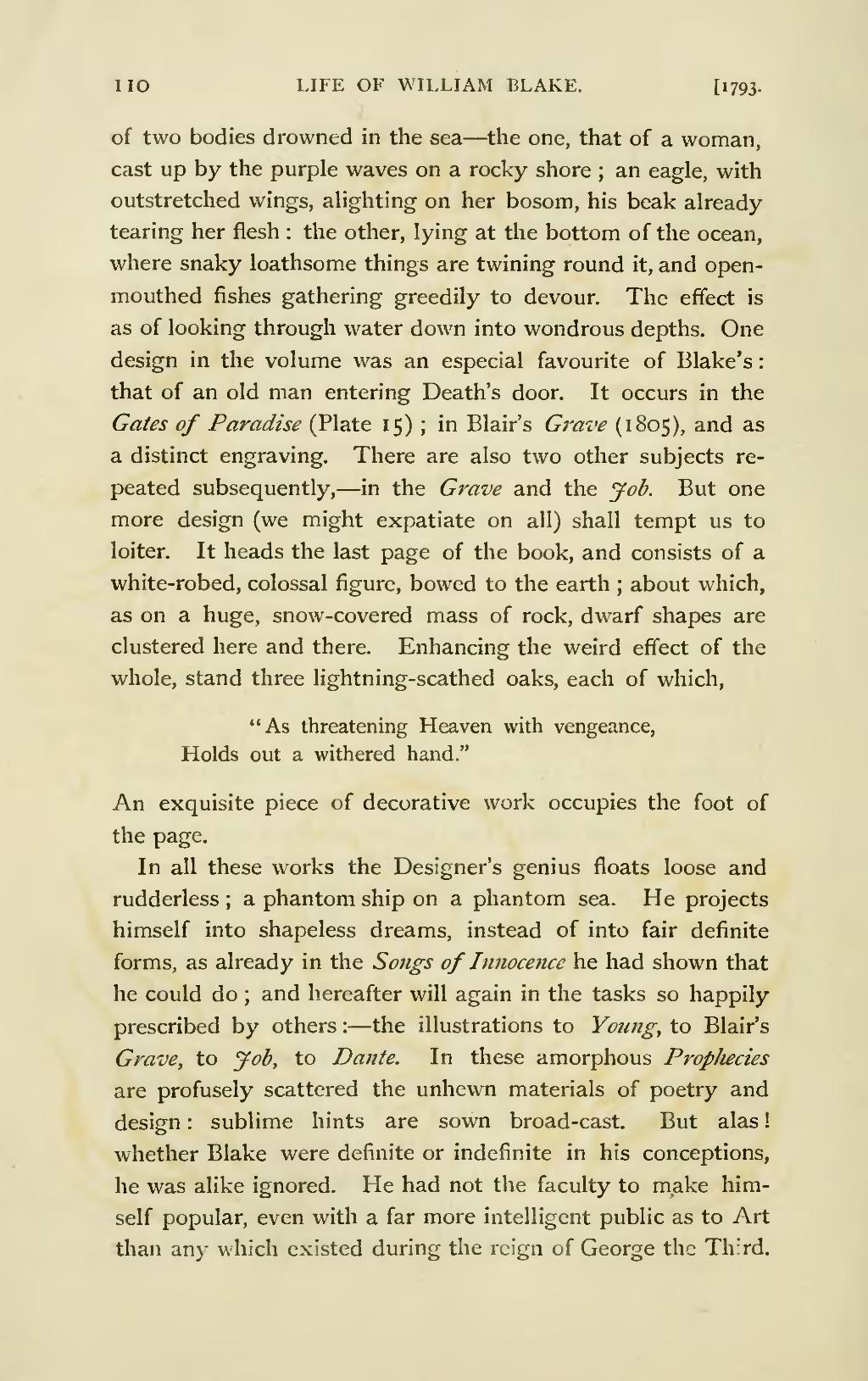of two bodies drowned in the sea—the one, that of a woman, cast up by the purple waves on a rocky shore; an eagle, with outstretched wings, alighting on her bosom, his beak already tearing her flesh: the other, lying at the bottom of the ocean, where snaky loathsome things are twining round it, and open-mouthed fishes gathering greedily to devour. The effect is as of looking through water down into wondrous depths. One design in the volume was an especial favourite of Blake's: that of an old man entering Death's door. It occurs in the Gates of Paradise (Plate 15); in Blair's Grave (1805), and as a distinct engraving. There are also two other subjects repeated subsequently,—in the Grave and the Job. But one more design (we might expatiate on all) shall tempt us to loiter. It heads the last page of the book, and consists of a white-robed, colossal figure, bowed to the earth; about which, as on a huge, snow-covered mass of rock, dwarf shapes are clustered here and there. Enhancing the weird effect of the whole, stand three lightning-scathed oaks, each of which,
"As threatening Heaven with vengeance,
Holds out a withered hand."
An exquisite piece of decorative work occupies the foot of the page.
In all these works the Designer's genius floats loose and rudderless; a phantom ship on a phantom sea. He projects himself into shapeless dreams, instead of into fair definite forms, as already in the Songs of Innocence he had shown that he could do; and hereafter will again in the tasks so happily prescribed by others:—the illustrations to Young, to Blair's Grave, to Job, to Dante. In these amorphous Prophecies are profusely scattered the unhewn materials of poetry and design: sublime hints are sown broad-cast. But alas! whether Blake were definite or indefinite in his conceptions, he was alike ignored. He had not the faculty to make himself popular, even with a far more intelligent public as to Art than any which existed during the reign of George the Third.
